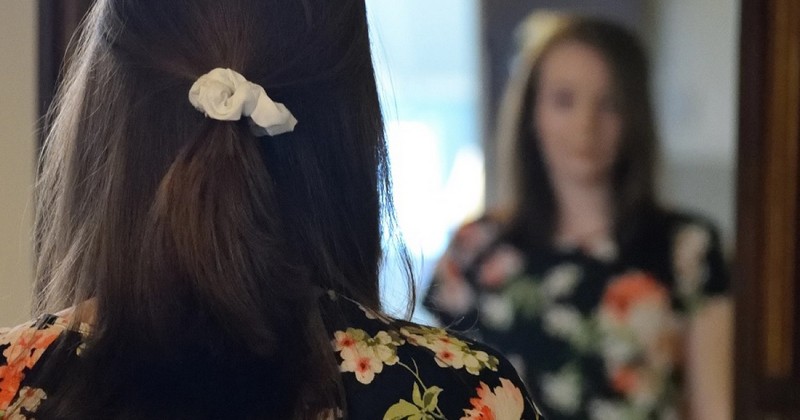Eisoptrophobia, the fear of self-reflection: symptoms, and what to do

This type of anxiety disorder is more common in people with low self-esteem.
Eisoptrophobia consists of an irrational fear of seeing one's own image reflected in a mirror.. More specifically, the sufferer experiences an intense fear at the thought of seeing something terrifying in the mirror, such as ghosts, spirits, etc.
Although the person is able to see the irrational and absurdity of his fear, he cannot avoid feeling it, as is the case with most phobias. This aspect is related to superstitious thinkingwhere it is believed that seeing one's own image reflected in a mirror can lead to something bad happening, and likewise if the mirror is broken. The cultural aspect is important to take into account here.
Eisoptrophobia is also associated, within anxiety disorders, to the rejection of one's own image. rejection of one's own image. When we do not have an adequate vision of ourselves but on the contrary, when we see ourselves reflected in a mirror we are in front of everything that produces us rejection of our own body, becoming something obsessive and that we tend to avoid. And, on the other hand, it can be part of a more serious mental disorder.
What is eisoptrophobia? Characteristics
Who suffers from eisoptrofobia has the same symptoms that occur in any phobia when we are in front of the feared stimulus, in this case the mirrors.In this case the mirrors, or we anticipate that we are going to be. Some of the most common symptoms are the following:
- Sweating.
- Choking sensation and shortness of breath.
- Tachycardia.
- Desire to run away and avoid mirrors.
- Dizziness and nausea.
- Intense fear and anxiety.
Who suffers from it?
After numerous investigations with scientific support, we can say that phobias are learned, and some people are more vulnerable than others to develop them.
This vulnerability can be due to several aspects, one of them, as I pointed out above, has to do with self-image and self-concept, has to do with self-image and self-concept.. That is to say, those people who have a low self-esteem, and focused mainly on their appearance, are afraid to look at themselves in the mirror because what they see produces very intense feelings of rejection. Avoiding to expose themselves to it generates a greater and more uncontrollable anxiety.
On the other hand, all that superstitious thought linked to the "bad luck" that comes from breaking a mirror, or breaking it by accident, as well as ideas of the type that the person can see reflected something frightening or even that something comes out of the mirror and can harm him/her, can give rise to irrational beliefs that cause and maintain the problem.
How does it damage mental health?
The consequences of any type of phobia are the limitations that the person suffers. Everything that surrounds what is feared will be avoided; in this case, anything to do with mirrors or reflective surfaces, everything that has to do with mirrors or reflective surfaces..
Those who suffer from this phobia at home do not have mirrors where they can see themselves, and will avoid those situations where there are mirrors, for example, social situations in restaurants, hairdressers or beauty salons, stores, etc. And those she cannot avoid, will be experienced with great discomfort and anxiety..
These limitations cause the person to reduce his circle of social activity, and can even affect his work, family and couple.
Treatment
The treatment of eisoptrophobia is aimed at to eliminate the fear, to unlearn what has been learned, and to know other ways of facing the problem..
The most effective therapeutic approach today is exposure therapy. exposure therapy. It consists of exposing the person to the feared stimuli gradually, in order to desensitize him/her little by little, and to provide him/her with anxiety management strategies, as well as to restructure the maladjusted and irrational thinking.
In this way, self-esteem and self-confidence can be restored.In short, one can have control of what happens, thus eliminating the limits that the disorder itself makes the person self-impose.
Bibliographical references:
- André, Christophe. (2006). Psychology of fear. Fears, anxieties and phobias. Barcelona. Editorial Kairós, 2006.
- Cavallo, Vicente. (1998). International Handbook of Cognitive and Behavioural Treatments for Psychological Disorders. Pergamon. pp. 5-6.
- Evans, Rand. (1999). Clinical psychology born and raised in controversy. APA Monitor, 30(11).
(Updated at Apr 12 / 2024)